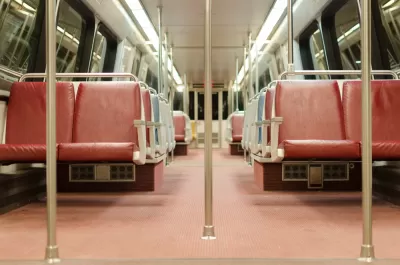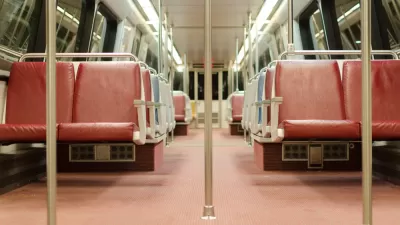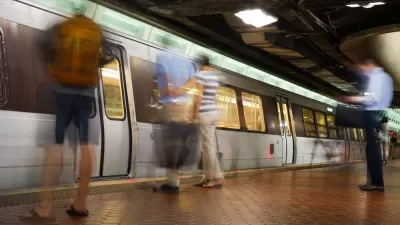A more sedentary approach to commuting is now more common than taking the bus or train to work, trailing only driving to work as the most common commute mode.

"The latest estimates from the U.S. Census Bureau published last week show that approximately 8 million workers primarily work from home," reports Mike Maciag. "That makes telework now second behind only driving as the most common means of getting to work, exceeding public transportation for the first time."
The share of commuters choosing telecommuting in the most recent American Community Survey has grown steadily, reaching 5.2 percent. Transit commuters remains flat at 5 percent.
According to Maciag, several factors are contributing to the growth of telecommuting, including employers programs and improvements in technology.
One key demographic distinction is worth mentioning to complicate the picture: "older workers are significantly more likely to telework than younger age groups."
Maciag lists more details about the data and also a few reasons why public transit's commute share has been suppressed in recent years.
FULL STORY: More Americans Now Telecommute Than Take Public Transportation to Work

Planetizen Federal Action Tracker
A weekly monitor of how Trump’s orders and actions are impacting planners and planning in America.

Congressman Proposes Bill to Rename DC Metro “Trump Train”
The Make Autorail Great Again Act would withhold federal funding to the system until the Washington Metropolitan Area Transit Authority (WMATA), rebrands as the Washington Metropolitan Authority for Greater Access (WMAGA).

The Simple Legislative Tool Transforming Vacant Downtowns
In California, Michigan and Georgia, an easy win is bringing dollars — and delight — back to city centers.

The States Losing Rural Delivery Rooms at an Alarming Pace
In some states, as few as 9% of rural hospitals still deliver babies. As a result, rising pre-term births, no adequate pre-term care and "harrowing" close calls are a growing reality.

The Small South Asian Republic Going all in on EVs
Thanks to one simple policy change less than five years ago, 65% of new cars in this Himalayan country are now electric.

DC Backpedals on Bike Lane Protection, Swaps Barriers for Paint
Citing aesthetic concerns, the city is removing the concrete barriers and flexposts that once separated Arizona Avenue cyclists from motor vehicles.
Urban Design for Planners 1: Software Tools
This six-course series explores essential urban design concepts using open source software and equips planners with the tools they need to participate fully in the urban design process.
Planning for Universal Design
Learn the tools for implementing Universal Design in planning regulations.
Smith Gee Studio
City of Charlotte
City of Camden Redevelopment Agency
City of Astoria
Transportation Research & Education Center (TREC) at Portland State University
US High Speed Rail Association
City of Camden Redevelopment Agency
Municipality of Princeton (NJ)





























